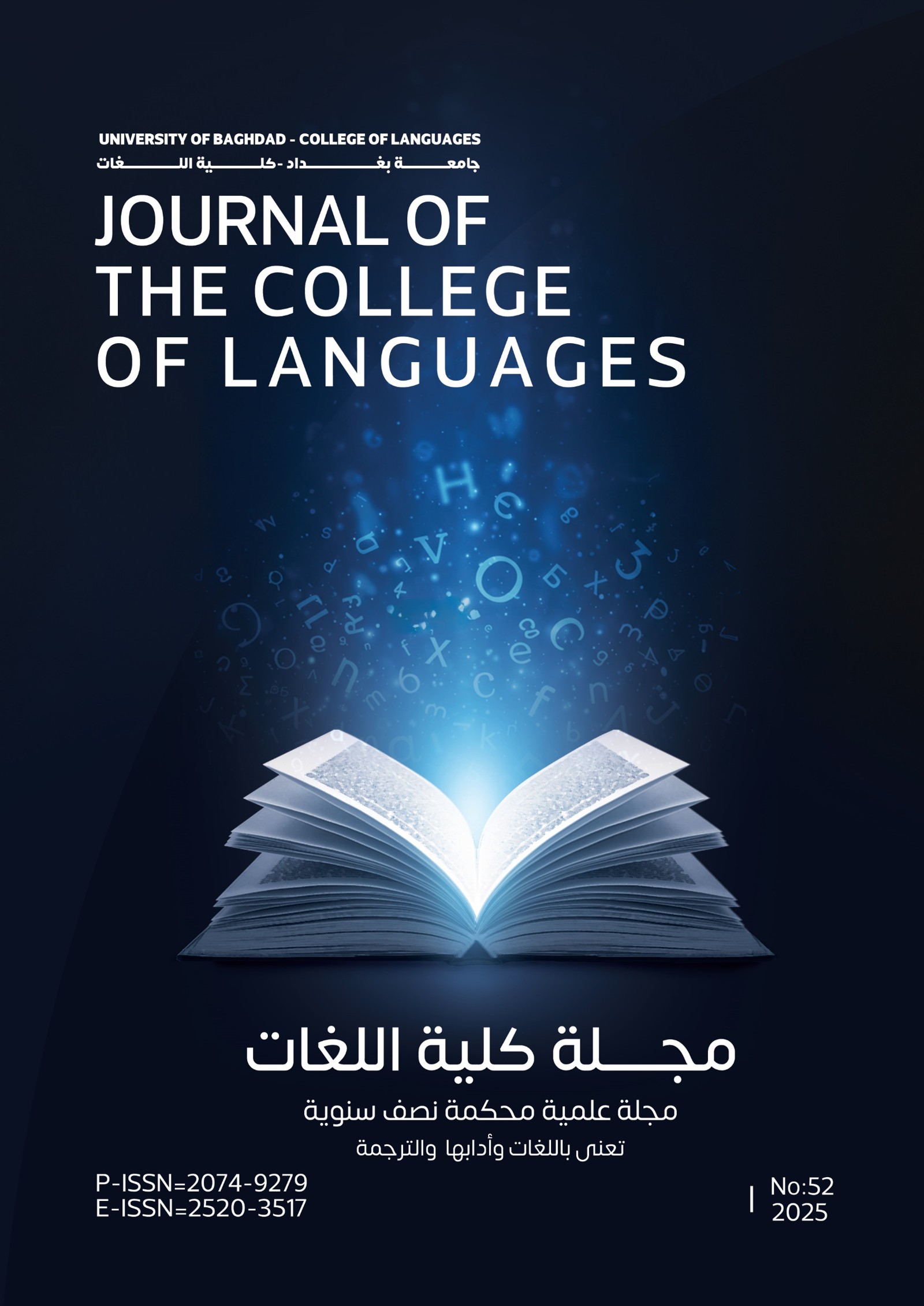Estudio traductológico del relativo "que" del español al árabe A study in the translation of relative pronoun (que) from Spanish into Arabic language
Abstract
The scope of the world of translation is an area filled with different types of translations, whether translations of scientific, social, political or economic in addition to the other types are endless, but the translation problematic grammatical that may confront us if we proceed to translate any subject are important issues that must Translator whether translators or interpreters that puts it into consideration and attaches great importance to the translation is very clear and without any ambiguity. One of these forms of grammatical task is to translate the relative pronoun (que) from Spanish into Arabic language, which revolves around the subject of this research.
The relative pronoun (que) is a word referring to another word unprecedented and is working to connect with another phrase. It is a tool in changing her gender and number so we see that this tool is used by the Spanish people on a large scale, especially at the toddler language. Fastening tool (que) means in Arabic (which is which and who I come......). Refers to the name preceded by, for example: (the car that I saw yesterday, El coche que vi ayer). While we find this same tool in the Arabic language and the sex variable in number according to the name that proceded.
The translation of relative pronoun (que) is not an easy task or easy as think a lot of people, quite the contrary it is the task extremely difficult because the interpreter, whether in writing or orally must be mastered uses correct idea, and avoids at the same time uses disinformation to reach translation is clear and correct, so the main goal of this research is to build a bridge leads us to distinguish the correct use of the fastening tool (que) when we translate from Arabic into Spanish in order to clarify these rules and to indicate their importance for translators, whether they are translators or interpreters if they want to be their translation correct and clear, through the expansion of knowledge concerning the proper use of this tool, leaving what other uses false if it is relevant and widely used.
It is worth mentioning that this research has a head portion and one is: how to translate the tool interfaces (que) in a sentence, and the concept of grammatical knowledge, whether in Arabic or Spanish alike. And addressed also to the phenomenon ( Alxuesmo quesuismo) in the language of Spain, and that means having a fastening tool (que) + tool owns (su) = in Arabic conscience hub + repeat personal conscience, such as: ( the girl that her car ), and speak also for fastening tool (que ) with identifiers, and with prepositions, and with reference tools, and use the conscience (que) instead arrived for the consciences of others, such as (quien, cual).







